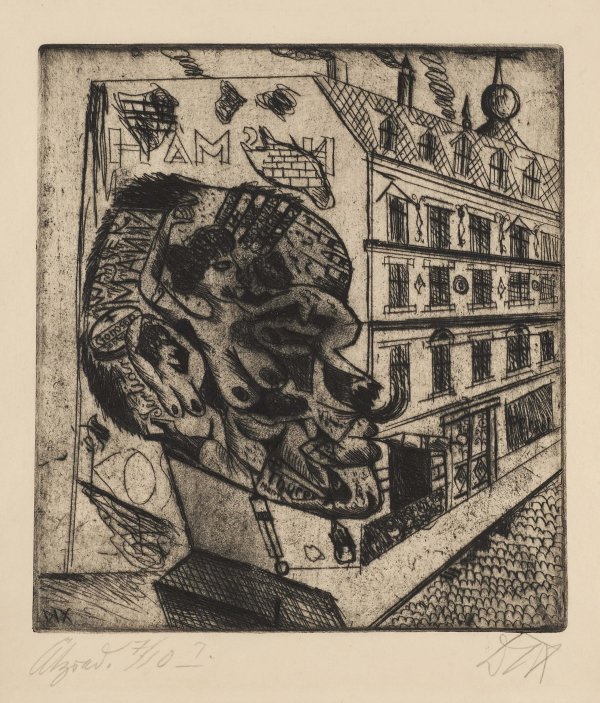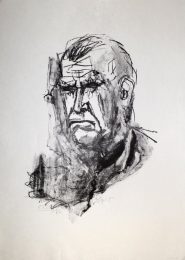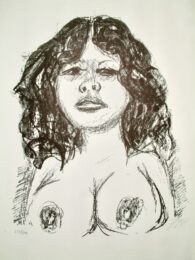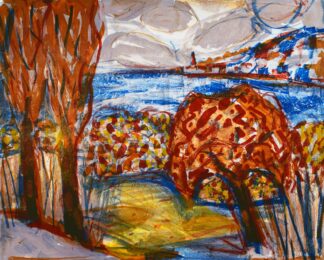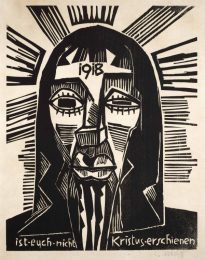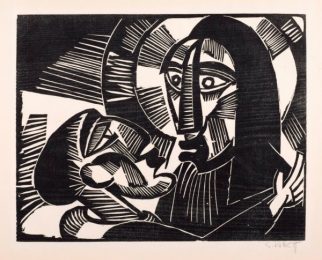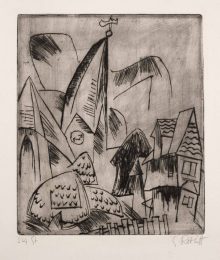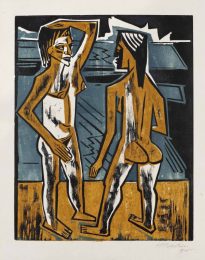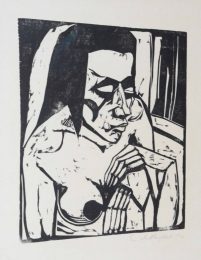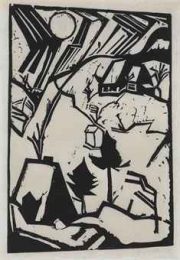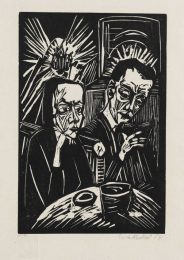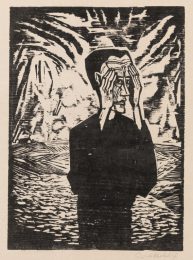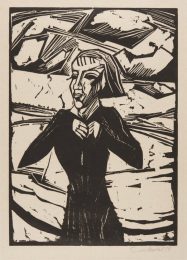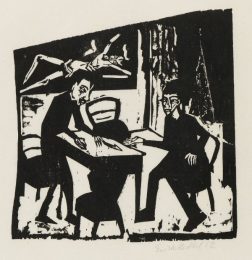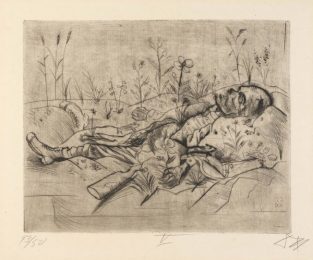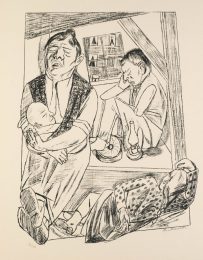Details — Click to read
one of ten numbered proofs aside from the numbered edition of 20 published in the portfolio 5 Radierungen by H Schilling, Dresdner Verlag
“In 1909 Dix moved to Dresden to study art. At the onset of World War I he volunteered to serve as a machine gunner and suffered serious wounds in front-line advances through Belgium and France. When he returned to Dresden to resume his studies, Dix joined a group of young radical Expressionists and also had contact with Dadaists, whose anarchism encouraged his growing nihilism. Directing a critical eye toward German society, Dix became preoccupied with subjects like veterans and urban decay, as well as prostitution and the destructive power of sex. In Syphilitic, evil temptation literally fills a man’s head, as he suffers from the madness brought on by this disease.” Deborah Wye, Artists and Prints: Masterworks from The Museum of Modern Art, New York: The Museum of Modern Art, 2004, p. 92
This work was published by the politically active Dresdner Verlag. Starr Figura and Iris Schmeisser write of this publishing house: “Short-lived, politically progressive publishing house established in 1917. Emerged from the pacifist circle of young, politically engaged artists and intellectuals, including artists Peter August Böckstiegel, Conrad Felixmüller, Otto Lange, and Constantin von Mitschke-Collande, and writers Walter Rheiner, Heinar Schilling, and Felix Stiemer, among others, who during World War I informally organized themselves as the Expressionist Working Group Dresden. This group later evolved into the Dresden Secession Group 1919. Its aim was to advance contemporary literature, music, and art; to work collectively; and to create a link between artists and the people. From 1918 to 1922, under the aegis of Schilling, published the monthly periodical Menschen (Mankind), which included many woodcuts by Felixmüller. In 1921 initiated the portfolio series Die Graphische Reihe (The print series), with each volume typically devoted to one artist; within this series published four port-folios by Otto Dix, as well as others by Karl Jakob Hirsch, Bernhard Kretzschmar, von Mitschke-Collande, and Lasar Segall. After various members of the circle successively left, and facing increasing financing problems due to rising inflation, stopped publishing after 1922” (Starr Figura, German Expressionism: The Graphic Impulse, New York, The Museum of Modern Art, 2011)

